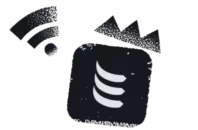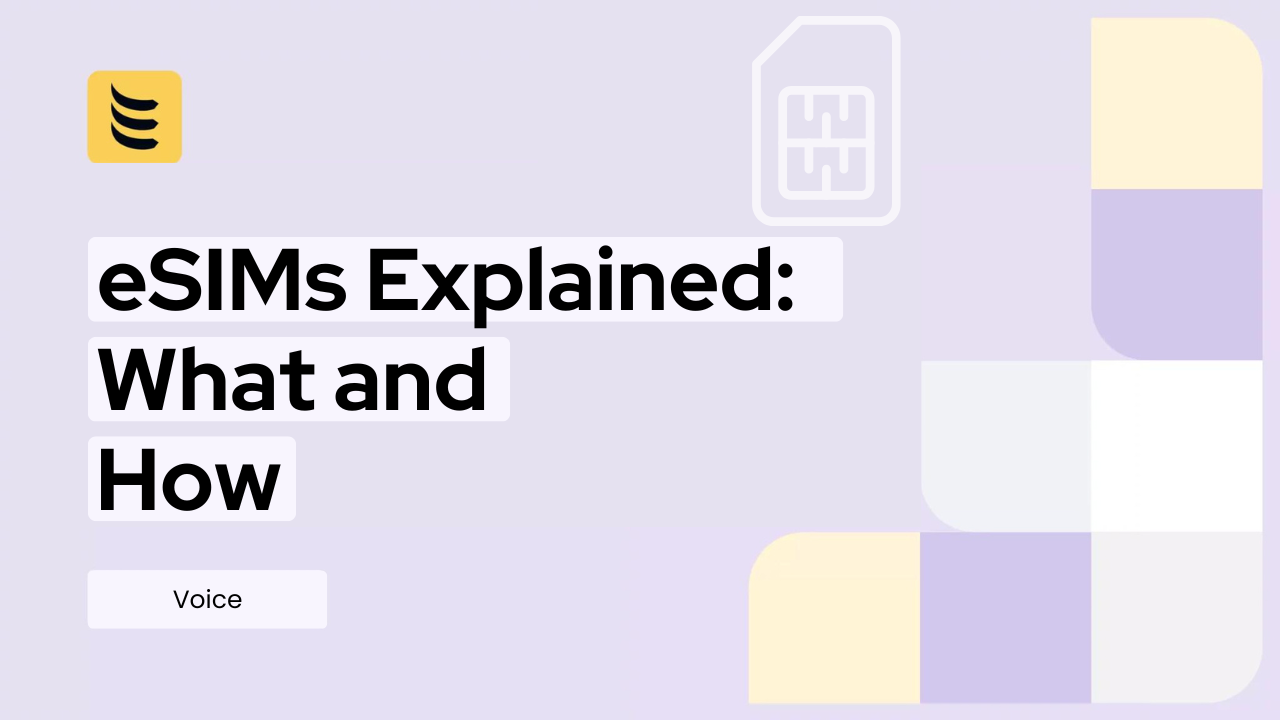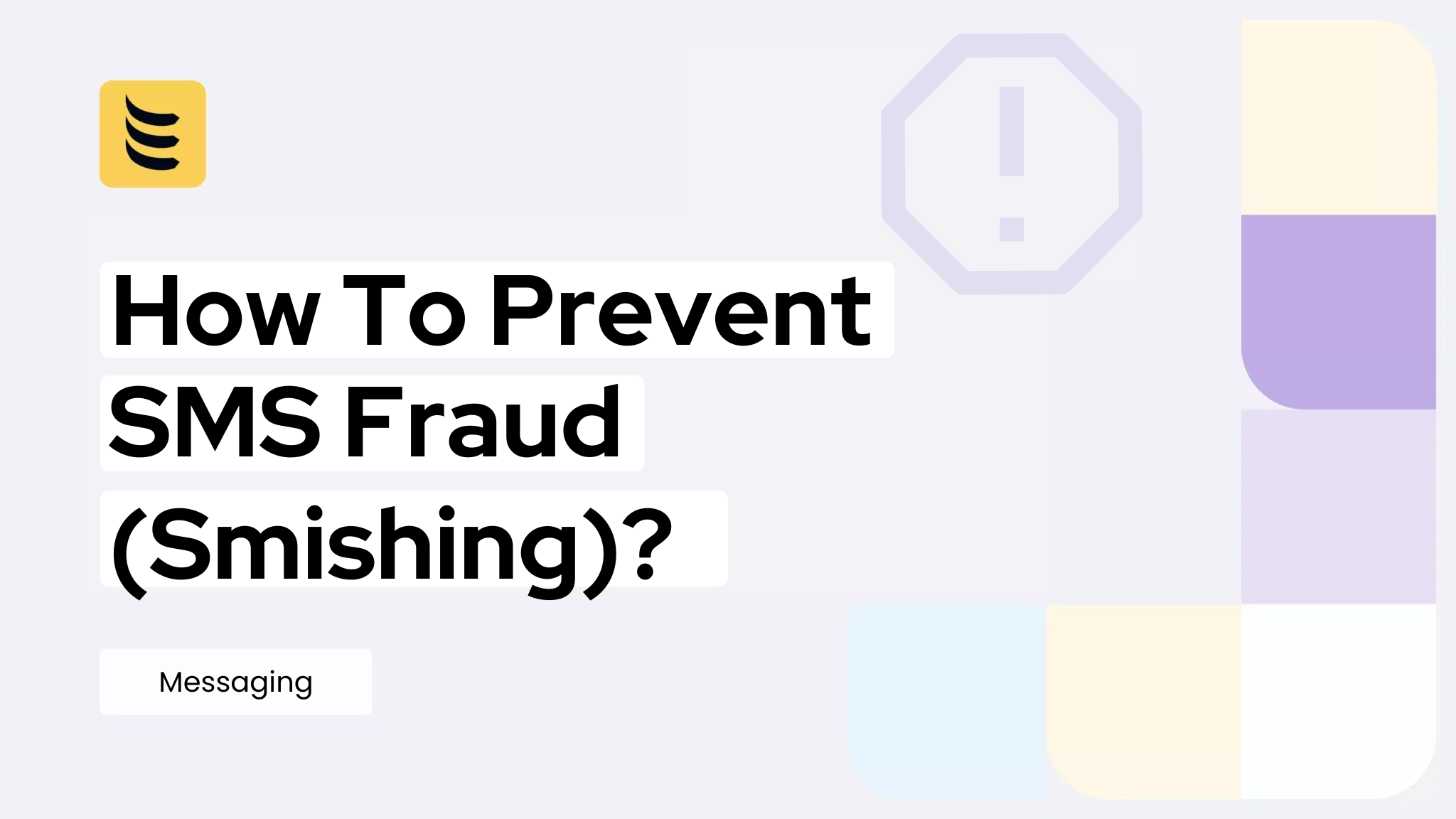Businesses are no longer tied to a specific telephone area code because of their physical location. The advent of internet telephony makes it possible to pick up calls anywhere in the world as though you were actually located in the area denoted by your telephone number.
VoIP services channel calls over the internet at little to no cost, so businesses can give the impression of a high-value location through their telephone number while operating out of offices in a much cheaper area.
The reallocation of call destinations opens up a wonderful array of opportunities. These are made possible by DID numbers.
What Is a DID Number?
DID stands for direct inward dialing. In some areas of the world, the system is known as direct dial-in (DDI). The term refers to the idea that numbers are not tied to a geographic location. Instead, service providers route calls through a private branch exchange (PBX) to the true location of the number’s owner.
The PBX explains how the DID system got its name. Historically, a business would have one telephone number for each office. The office would have a switchboard that received all incoming calls, and the caller would ask the switchboard operator to be put through to a specific person or department in the company. The operator would then look up the extension number of that person and transfer the call.
When PBXs replaced switchboards, it became possible to automate the call transfer process. The caller would wait for a message and then enter the extension number to get through to the right person.
The fact that telephone directories didn’t publish the list of extensions in each building was an issue with this system since anyone making a general inquiry wouldn’t know the right telephone extension number. In these cases, people still had to call into the reception desk in order to ask to be put through to the right person.
When DID numbers were introduced, companies purchased blocks of sequential telephone numbers. The last four numbers would then provide the extension number for internal calls. However, external callers would be able to dial in directly to the right extension simply by calling the published number for that specialist or department.
In this new PBX-driven scenario, the telephone company would direct all calls to any number within that block to the PBX, which sat on the main number for the office. The PBX would then detect the last four digits dialed and switch the call through to the relevant extension.
Therefore, callers from outside the building would get direct access, bypassing a switchboard or receptionist. Hence, “direct inward dialing.”
Expansion of the DID System
The area code on a telephone number directs calls to a specific location—either a city or an area. Once the call has been successfully connected through to the PBX for the dialed number, the telephone company’s responsibility ends. What happens to that call after it reaches the PBX is a private matter.
When it became possible to set up the PBX so that calls to a specified number got forwarded out of the building—either to a home-based worker’s telephone or to another office building— businesses used leased lines to channel private calls to other buildings.
However, leased lines are expensive to run. Business services entrepreneurs came up with a way to create virtual private networks over public lines. This provided the privacy of a private network while only requiring per-call charges rather than the hefty fees of a private cable.
This expansion of private networks beyond office walls was only made possible when office telephone systems switched over from analog to digital technology. Voice data was digitized and run over the data network, then tagged so that it could be identified as a separate channel, even though it traveled along the same wire as data.
That data packet tagging is precisely how the internet works. Companies could then make one of the lines managed by the PBX lead to the internet, so a particular extension number could easily be assigned to one of the telephones in the building or to another line outside of the building.
What Is a DID Number Used For?
Thanks to VoIP technology, telephone calls arriving at a PBX can be routed through to home-based workers. They can even be directed through CRM software, improving customer tracking and quality of service.
DID numbers, in partnership with digital PBXs, expand the possibilities of telecommunications. PBXs can create group calls and ringing groups. Digitized telephone systems can carry video just as easily as they can transmit voice calls, and they can even integrate calls into collaboration and social media platforms.
DID numbers allow companies to offer a more personalized experience by assigning unique numbers to individuals or departments. For example, a customer calling a support team can be directly connected to the relevant agent, eliminating the need for manual transfers.
Additionally, DID numbers are crucial for businesses looking to establish a local presence in different regions or countries. By providing local numbers to customers, businesses can build trust and improve accessibility while managing all calls centrally.
DID numbers revolutionize how businesses communicate, offering a unified, professional image to the world while enabling remarkable flexibility behind the scenes. They allow calls to be seamlessly routed to mobile phones, with number assignments easily adjustable in just minutes.
These numbers are precious for integrating remote employees into the company’s communication network, ensuring they feel connected and accessible, regardless of location. Additionally, DID numbers can unify multiple business locations, creating the impression of a single cohesive office regardless of geographic distance. In short, they bridge gaps, simplify operations, and effortlessly adapt to modern work strategies.
DID numbers enable businesses to relocate without losing a prestigious telephone area code and can even allow businesses to eliminate offices altogether.
Top Area Codes Driving Demand for DID Numbers: Prestige, Reach, and Strategic Advantage
When businesses seek DID (Direct Inward Dialing) numbers, certain area codes are particularly popular due to their recognition, prestige, or strategic advantages. Here are some of the most sought-after area codes that drive demand for DID numbers:
1. New York City Area Codes
- 212, 646, 332, 917
Why They’re Popular:- Prestige and Recognition: The 212 area code, in particular, is iconic and immediately associated with Manhattan and New York City’s business elite.
- Trust and Credibility: Having a New York area code can enhance a company’s credibility, signaling a presence in one of the world’s leading business hubs.
2. Los Angeles Area Codes
- 213, 310, 424, 818
Why They’re Popular:- Entertainment Industry Presence: Area codes like 213 and 310 are synonymous with Hollywood and the broader entertainment industry.
- West Coast Reach: These area codes help businesses establish a strong presence on the West Coast, appealing to clients and partners in California.
3. Chicago Area Codes
- 312, 773, 872
Why They’re Popular:- Central Business Hub: Chicago is a major financial and commercial center in the Midwest, and its area codes are recognized nationwide.
- Professional Image: Using a Chicago area code can convey stability and professionalism.
4. San Francisco Area Codes
- 415, 628
Why They’re Popular:- Tech Industry Association: The 415 area code is closely linked to Silicon Valley and the technology sector, making it attractive for tech companies.
- Innovative Image: Businesses using these area codes can project an image of innovation and cutting-edge technology.
5. Miami Area Codes
- 305, 786
Why They’re Popular:- International Appeal: Miami serves as a gateway to Latin America, and its area codes are ideal for businesses targeting international markets.
- Vibrant Market Presence: The 305 area code is well-known for its association with a vibrant and dynamic business environment.
6. London Area Codes (UK)
- 020Why They’re Popular:
- Global Financial Center: London is one of the world’s leading financial centers, and the 020 area code is highly respected internationally.
- Global Reach: A London area code can help businesses establish a presence in Europe and signal global ambitions.
7. Sydney Area Codes (Australia)
- 02
Why They’re Popular:- Major Business Hub: Sydney is Australia’s financial and economic center, making the 02 area code desirable for businesses operating in or targeting the Australian market.
- International Recognition: It helps businesses appear local to Australian customers while maintaining an international presence.
8. Toronto Area Codes (Canada)
- 416, 647, 437
Why They’re Popular:- Economic Significance: Toronto is Canada’s largest city and a major economic hub, making its area codes highly sought after.
- Bilingual Appeal: These area codes are beneficial for businesses serving both English and French-speaking markets within Canada.
9. Hong Kong Area Codes
- 852
Why They’re Popular:- Asia-Pacific Gateway: Hong Kong is a key business gateway to Asia, and the 852 area code is recognized across the region.
- International Business Presence: It helps businesses establish credibility and accessibility in the Asian markets.
10. Paris Area Codes (France)
- 01
Why They’re Popular:- Cultural and Economic Hub: Paris is a major center for culture, fashion, and business in Europe, and the 01 area code is highly prestigious.
- European Market Access: A Paris area code can aid businesses in gaining trust and visibility within European markets.
Cloud-Based Telephony Services

The cloud concept enables IT services companies to provide both hardware and software. Using cloud services removes the need for businesses to hire IT staff because they no longer need to maintain their own software or run their own servers.
Internet telephony providers have not overlooked the potential of the Cloud—online PBX services now proliferate. The ability to buy a DID number, attract calls to a specific location, and allocate that number to any device anywhere in the world truly liberates businesses.
Is This Just Call Forwarding?
With call forwarding, a call arrives at one phone and then gets transferred onto another phone. On the surface, it seems that call forwarding is what PBXs do. However, there is a fundamental difference between the allocation of DID numbers and call forwarding. The PBX is an exchange and not an endpoint; it doesn’t receive calls, it routes them. It is a private addition to the public telephone network’s mechanical call routing system.
The crucial advantage of DID number allocation over call forwarding lies in caller IDs. Although it’s great to be able to forward calls to cell phones and remote offices, customers will see the unexpected number when anyone on those devices calls them back.
On the other hand, once a DID number is allocated to a device, that number identifies all calls made from it.
The Benefit for Customers
With the opportunities presented by DID numbers in mind, a marketing strategy can help you present these benefits to your existing and future customers.
DID numbers offer benefits across the board, which will be useful to the marketing manager, operations manager, the HR manager, and the accounting department. This is because DID numbers enable:
- Improved corporate image
- Flexible working practices
- Global and distributed hiring policies
- Cost savings on office space
The adoption of a DID number strategy can transform a business. The only limit on its potential benefits lies in the willingness or reluctance of companies to leave behind traditional business structures.
Vanity Numbers
Many businesses use the letters on a telephone keypad as a marketing tool. Getting a number that spells out a word to explain or exalt the purpose of the enterprise can be a very effective communication strategy. However, it is very difficult to get a vanity number from your regular telephone provider. When a business requests a new number, the operator will simply offer the next available sequential number.
It’s possible to request a specific number, but quite often, those jazzy meaningful numbers are already taken. Number selection is a phase of a business’s marketing effort that telephony service providers can capitalize on. If you’re able to organize your number allocation system so that it enables inquirers to browse available numbers, you stand a better chance of winning new customers.
Customers who aim for a national market won’t be too worried about the area codes that you offer. Those who are looking for a meaningful word interpretation of a number might be more willing to consider numbers in any area code. As DID numbers can be used to channel calls anywhere, regardless of location, this service could be a great marketing tool for you while you support the marketing dreams of potential customers.
Freephone Numbers
Traditional telephone companies had been offering spellable freephone numbers for decades before the industry was liberalized and other companies were allowed to offer telephone numbers. The attachment of a freephone number to a physical number regardless of area code was a forerunner of the DID system that emerged later. The internet revolution and the breaking of AT&T’s hold on the telecommunications industry allowed contender businesses to arise and offer more competitive prices for free number customers.
Freephone DID numbers allow your customers to receive calls from all over the US and channel them through to a sales office, which could easily be located offshore. It’s even possible to outsource customer service departments so your customers don’t need to employ their own operators.
Keep Your Customers Happy
Those outsourced service providers also offer VoIP call transfers and DID numbers as a package.
If you are a VoIP telephony service and don’t offer the sale of DID numbers, your customers may go elsewhere for their numbers and eventually replace your services with their new partner.
Neglecting to supply your customers with all of the telephony-related accessories that they need opens the door to your customers shopping around. DID numbers offer great benefits to you, not just your customers. Being able to offer a full telephony package including DID numbers keeps your customers close.
DID Number Advantages
DID numbers are the key to offering your customers a new way to do business. They’ll benefit from the many opportunities afforded by DID numbers, including the ability to slimline their businesses without compromising on quality. In fact, it will enable them to improve service quality.
A global office tied together with a DID number can deploy individual home-based technicians at strategic locations around the globe. This strategy will allow your customers to offer 24-hour support to their own clients without demanding that operators work through the night. A DID number user can shift the allocation of that number to different devices at will and can also schedule this allocation depending on the time of day. This enables support calls to be directed to different parts of the world at different times based on staff availability.
Marketing professionals will immediately recognize the advantages that DID numbers offer. Many local numbers can be directed towards one central sales office and it’s much easier to open an office to promote sales in a new country if the business doesn’t actually need to have property or employ people in that location. That new overseas office is just another DID number that directs calls back to the company’s existing premises and experienced staff.
DID numbers augment marketing strategies, slimline operations, simplify recruiting, and cut costs. If you are not currently offering DID numbers to your customers, be aware that your competitors will.
If you are interested in purchasing US & Global DIDs for your enterprise, business, or residential users, please reach out to the voice experts at IDT Express for more details.
How DID Numbers are shaping up cloud communication in 2024?
In 2024, several key trends emerged in the realm of DID (Direct Inward Dialing) numbers, shaping how businesses approach voice communication and customer engagement:
1. Global Expansion and Rare DID Demand:
In 2024, we’ve seen a significant surge in demand for DID numbers in hard-to-reach regions. For instance, businesses expanding into markets like rural India or smaller European nations are looking for local DID numbers to establish a presence. A software company expanding customer support to South America might require a local number in Argentina to offer seamless support, ensuring their clients feel comfortable calling a familiar, local number.
2. Regulatory Compliance:
With stricter regulations worldwide, businesses are paying close attention to DID number compliance. For example, a U.S.-based e-commerce company operating in the EU now needs to ensure its customer support numbers comply with the General Data Protection Regulation (GDPR). Failure to adhere to such laws could result in hefty fines, driving companies to partner with DID providers that ensure proper compliance in different regions.
3. AI and Automation Integration:
DID numbers are increasingly integrated with AI-driven tools, particularly in contact centers. For example, a financial services company might use DID numbers alongside AI-powered interactive voice response (IVR) systems, enabling customers to be routed directly to the appropriate department based on their inquiry, without needing to speak to a live agent. This reduces wait times and enhances customer satisfaction.
4. Omnichannel Integration:
Businesses are integrating DID numbers with omnichannel messaging platforms to provide a unified communication experience. A SaaS company might use the same DID number for both voice calls and SMS notifications, while also integrating with messaging apps like WhatsApp or Telegram. For instance, a customer booking a ride via WhatsApp could receive a confirmation call or message from the same DID number, ensuring seamless communication across channels.
5. Scalability and Flexibility:
As businesses face seasonal fluctuations, they are seeking scalable DID solutions. Retailers during Black Friday, for instance, often see spikes in customer inquiries. A retailer using DID numbers for its customer support might scale up its phone lines temporarily to handle the surge in calls and then scale down afterward, keeping operational costs efficient.
6. Enhanced Fraud Prevention:
With increasing concerns about fraud and spam calls, companies are investing in solutions that help ensure their numbers are not flagged as ‘spam likely’. For example, a marketing company could use a platform that regularly checks whether their outbound DID numbers have been marked as spam in major carrier databases. This trend has become particularly relevant, as many companies rely on outbound calls for sales and customer engagement, and having a number flagged as spam can hurt their business.




